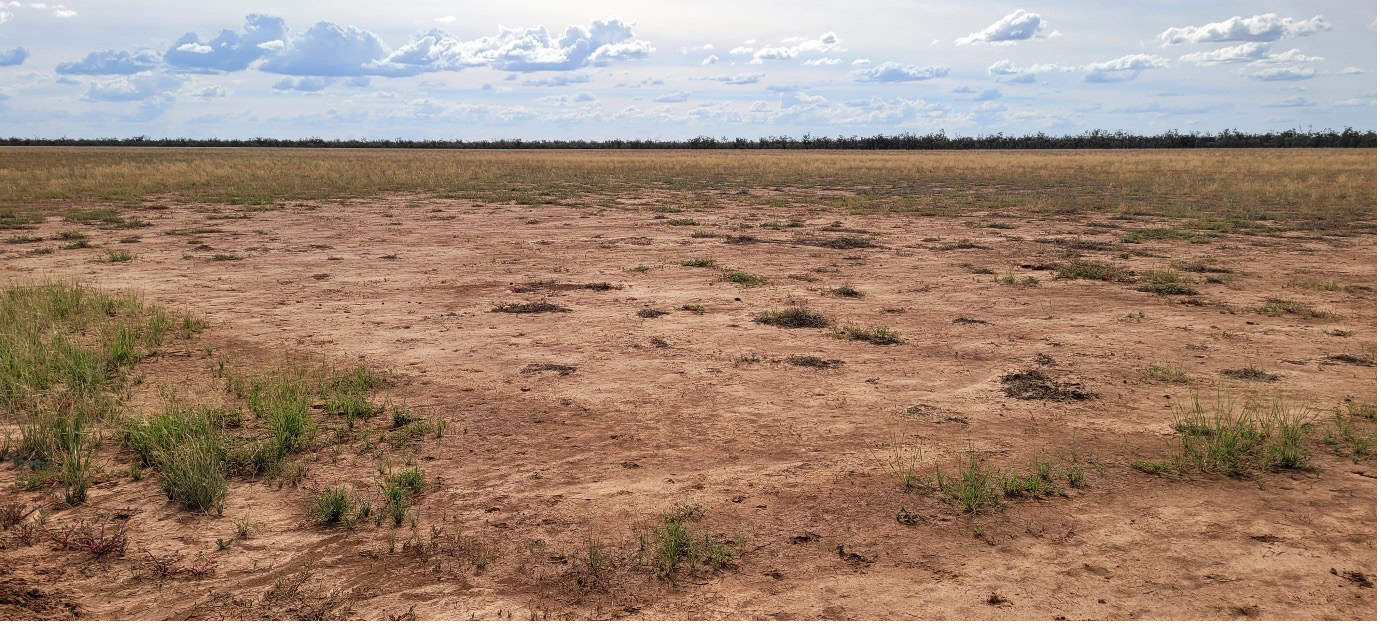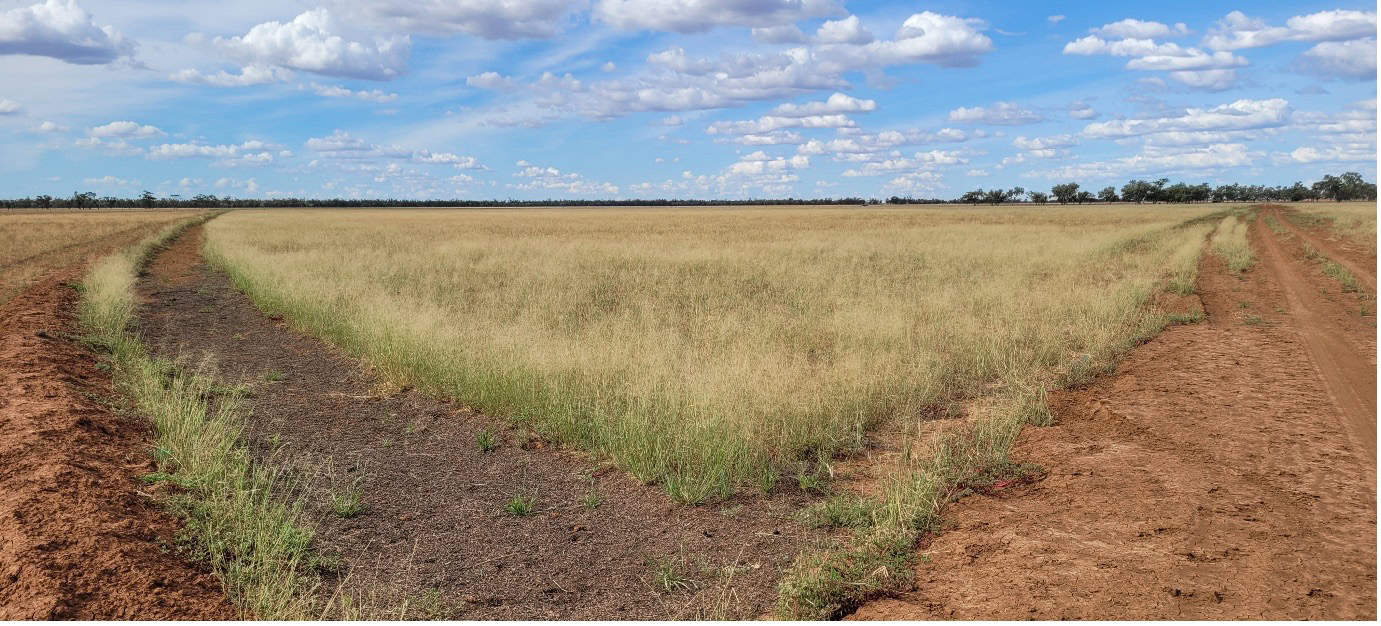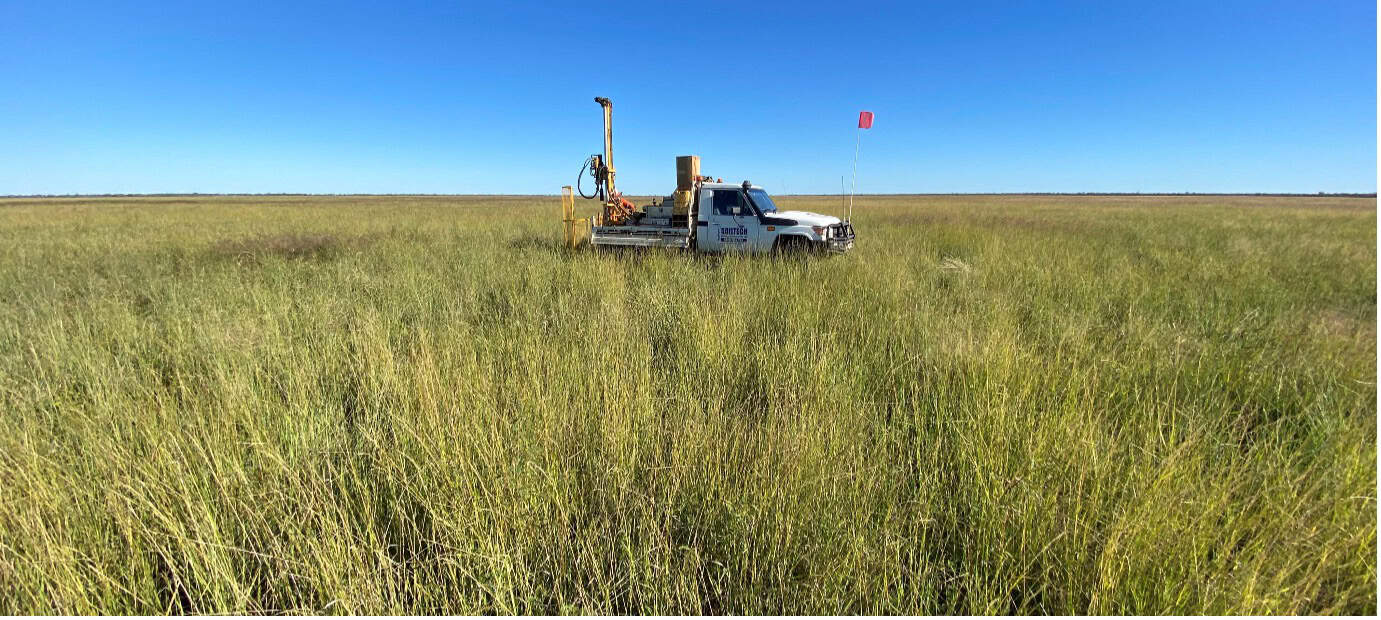A south-western Queensland program, delivered across three sub-regional locations has delivered huge outcomes for both landscape and community resilience.
The focus areas of Traprock, Mitchell and Lower Warrego contain important environmental and grazing assets and regional NRM organisation Southern Queensland Landscapes worked together with its community to improve land condition over 66,359ha of prime agricultural land.
_ _
Photo Series: bare ground recovery after ‘slow the flow’ interventions on the property ‘Mirage’ in the Warrego area – December 2023 to May 2024.

BEFORE slow the flow interventions on the property ‘Mirage, Warrego area, Dec 2023.

PROGRESS: slow the flow interventions on the property ‘Mirage, Warrego area.

AFTER slow the flow interventions on the property ‘Mirage, Warrego area, May 2024
Significant outcomes achieved
In addition to the 66,359ha under improved land condition, the following outcomes were achieved:
- 99,058ha under improved land management practice
- 36 land managers applied new knowledge and sklils to on-ground land condition projects
- 34 land managers were provided with one-on-one technical advice to increase understanding of landscape processes and to plan on-ground remediation works
- $1.2 million of co-contributions were made by participating land managers
- 22 capacity building events took place, engaging 430 people with 82% of attendees reporting an increase in knowledge and 64% committing to long-term change
- 4 First Nations groups indicated economic, cultural and empowerment benefits as a result of their involvement
How First Nations people were engaged
Culturally appropriate collaboration in three priority areas has added value to this project, building further trust and understanding between First Nations groups and the regional NRM organisation, Southern Queensland Landscapes. Through this project, Knowledge Holders, Elders and Traditional Owners worked together to revive traditional fire management practices as an important legacy to ensuring Cultural Knowledge is preserved and passed on to future generations. First Nation training and participation initiatives delivered through this project also inspired First Nations groups to look at establishing ranger programs in region.
_ _
Watch the video featuring ‘Ashmount’ grazier Rowen Watson in the Mitchell area.
About the 3 focus areas
In the Lower Warrego, bare ground is both a symptom and a cause of poor water infiltration. The high density of now mostly disused bore drains and past grazing practices have contributed to bare ground and allows faster movement of water through the landscape, no percolation into the soil and higher risk of expanding gully erosion due to the speed and volume of water arriving at natural drainage lines. Restoring landscape function and establishing native pasture in these areas has multiple benefits of reducing land degradation and increasing the overall production capacity of the property through pasture growth and retained soil moisture.
The Mitchell and downstream priority area contains significant areas of grazing assets identified in Flourishing Landscapes Healthy Communities and is an important contributor to the water resources of high value cropping areas further downstream in the Balonne catchment.
Traprock is a significant headwater area for the Border Rivers and Upper Condamine and upstream of cropping in Border Rivers region. Traprock supports a diversity of production systems and ecological values associated with the New England tableland bioregion. It has experienced extreme drought, fires, and flooding in quick succession in recent times.
Find out more: https://www.sqlandscapes.org.au/project-to-recover-bare-ground-in-southern-queensland.
Feature image: Kooma Knowledge Sharing Workshop on Murra Murra. May 2024
